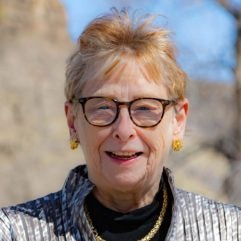
Delivering the Muir Wood Lecture entitled “Underground resources for a sustainable global future”, Professor Priscilla Nelson, head of the Department of Mining Engineering at the Colorado School of Mines, said there was a lack of qualified professionals, particularly in the west.
“There is a generation of engineers coming to retirement who will never be replaced. We simply are not educating those who could take over,” she said.
As an example, Nelson said that one university of mining in China produced more qualified engineers in a year than all the universities of mining study in the US combined.
“In the future, the new generation of mining engineers will be Chinese,” she said.
Professor Dr Hehua Zhu of Geotechnical Engineering at Tongji University, Shanghai, delivered the keynote lecture, entitled the “Development and applications of intelligent tunnel construction: the state-of-the-art and future perspectives”. He outlined how advanced China was in developing intelligent tunnelling systems to reduce uncertainties during excavation and improve the quality, safety, and operating durability of creating and managing underground public infrastructure.

Two plenary roundtable discussions expanded on the WTC’s theme of “Tunnelling for a better future”. The first explored the challenges and path of developing future tunnelling technology. The panel agreed that industry innovations could only be achieved with team work and that the ‘team’ included owners and financiers.
The second roundtable discussion considered the use of tunnels and underground space towards sustainable development. The panellists included Dr Norlida Buniyamin, WFEO-World Federation of Engineering Organisations Executive Council member from Malaysia; ITA president Arnold Dix, Australia; Ke Fang, director-general of the Implementation Monitoring Department of the AIIB-Asia Infrastructure Investment Bank; Samuel Huckle, member of the ITA Young Steering Board and a civil engineer; Sheng Ying, national officer of UN-Habitat China Office; and Alexis de Pomerol, Société des Grands Projets of France.
The discussion concluded that the focus of underground engineering was not the excavation process, but the purpose of the underground space and how it would impact the lives of many. The engineer’s task was to design and excavate that space as efficiently, safely and cost-effectively as possible and to deliver an underground structure that was fit for purpose, durable, and maintenance efficient.
This year is the ITA’s 50th anniversary and the occasion was marked in a special plenary session at which all 17 ITA presidents since its founding in 1974 were honoured. Seven of the 17 were in person at the WTC in Shenzhen – Günter Girnau, Germany, 1980-1983; Alfred Haack, Germany, 1998-2001; Andre Assis, Brazil, 2001-2004; In Mo Lee, S Korea, 2010-2013; Soren Eiskesen, Denmark, 2013-2016; Jenny Jinxiu Yan, China, 2019-2022; and current president Arnold Dix of Australia, 2022-2025.
Four past presidents who attended via a video presentation were Einar Broch, Norway, 1986- 1989; Sebastiano Pelizza, Italy, 1995-1998; Martin Knights, UK, 2007-2010; and Tarcisio Celestino, Brazil, 2016-2019.
The founding president, Alan Muir Wood of the UK, 1974-1977; and Heinz Fischer, Switzerland, 1977-1980; Jack Lemley, USA, 1983-1986; Colin Kirkland, UK, 1989-1992; Dan Zdenek Eisenstein, Canada, 1992-1995; and Harvey Parker, US, 2004-2007, were also remembered.
The ITA’s 50th anniversary is being celebrated with the launch of a book – “50 Iconic Projects of the last 50 Years”. The publication charts the history of the ITA in more than 1,000 photographs, and is supported by a video of the same content.







